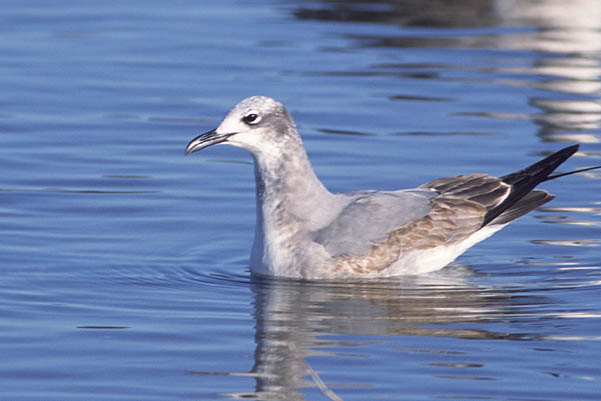
Location: Lake Murray, La Mesa, CA
Date: 0000-00-00
Lens: Canon 400mm F5.6 + 1.4x II Converter

 Laughing Gull
Larus atricilla
Laughing Gull
Larus atricilla
 Description
DescriptionIn my opinion, this is one of the most beautiful gulls. And it is a rare find on the west coast. This species has declined in recent years due to destruction of coastal marshes and an increase in Herring Gulls, which prey on their eggs and young. As their name describes, this bird has a "Ha-Ha-Ha-Ha" call. Feeds on fish, crabs, snails, insects, eggs, and chicks.
White neck, breast, and belly. White underparts. Dark gray back and upperwings. Black primaries. Black head and legs. Long red bill. White crescent above and below eye. White tail. Has adult plumage by third year. Wintering gull lacks black head and may have white tips on primaries. 13-14 inches in length.
Second Year: White body and tail. White head with faint streaking towards rear of head. Black bill and legs. Black primaries. Tail may show remnants of a terminal band.
First Year: Light gray head with black streaks towards rear of head. Gray back and breast. Brown upperwing coverts. Black bill and legs. White tail with black terminal band.
Salt marshes, lagoons, and coastal beaches.
 Nesting
Nesting3 olive-brown colored eggs with dark splotches. The eggs have a 25 day incubation period. Fledging occurs in 35 days. The nest is built on the ground, in sand or in a salt marsh, and is lined with grass and weed stems. Nests in colonies.